All issues

Predecessor
Volume 50, Issue 3
Displaying 1-5 of 5 articles from this issue
- |<
- <
- 1
- >
- >|
49th Annual Meeting of the Japanese Association of Rehabilitation Medicine Symposium
-
2013Volume 50Issue 3 Pages 171-194
Published: 2013
Released on J-STAGE: May 31, 2013
JOURNAL FREE ACCESS
Principles of an Integrated Community Care System and Community-based Rehabilitation…Akinori HAMAMURA 171
Medical Rehabilitation and Community Cooperation…Yuichi UMEZU 178
The Role of a Physiatrist…Goro OHSAKA 182
The Role of a Therapist…Haruki NAKAMURA 187View full abstractDownload PDF (2752K)
Original
-
Keisuke OE, Yoshitada SAKAI, Takeshi UEHA, Takahiro NIIKURA, Masahiko ...2013Volume 50Issue 3 Pages 195-201
Published: 2013
Released on J-STAGE: May 31, 2013
JOURNAL FREE ACCESSObjective : In Europe, carbon dioxide therapy has been used for treating cardiac disease and skin problems for a long time. Previously, we demonstrated that transcutaneous carbon dioxide (CO2) application facilitated dioxygen (O2) dissociation from hemoglobin (Hb) in the human body. Additionally, we proved that transcutaneous CO2 application to the lower limbs of rats increased the expression of peroxisome proliferator-activated receptor (PPAR) gamma coactivator-1α (PGC-1α), vascular endothelial growth factor (VEGF) and silent mating type information regulation 2 homologs 1 (SIRT1). It also increased the number of mitochondria, and changed IIB fiber to IIA fiber in similar manner to the change that occurs after exercise. The transcutaneous CO2 application caused a similar effect to that of exercise training in skeletal muscle and indicated the possibility of improved endurance strength. However, the effect of transcutaneous CO2 application on endurance exercise and the recovery of muscle fatigue has not been studied. Methods : In this study, we investigated the performance of endurance exercise in rats with/without transcutaneous CO2 application and analyzed the muscle fiber changes, capillary density and mitochondrial DNA number of the skeletal muscles after training, using activity wheels. Results: Training with CO2 application resulted in a higher percentage of TA muscle transformed to IIA and/or IID than training alone, suggesting that transcutaneous CO2 application may increase the production of ATP, mitochondria number, and capillary density. Therefore, transcutaneous CO2 application might lead to muscle damage recovery. Conclusion : We suggest that transcutaneous CO2 application has a therapeutic potential for recovery of damaged muscle after excessive exercise and rehabilitation.View full abstractDownload PDF (442K)
Review Articles
-
Ichiro FUJISHIMA2013Volume 50Issue 3 Pages 202-211
Published: 2013
Released on J-STAGE: May 31, 2013
JOURNAL FREE ACCESSDysphagia is a syndrome associated with many diseases and is emerging as a big problem in the Japanese aged society. It is important to observe the symptoms and realize the causes of dysphagia. Swallowing disorders are often caused by organic etiology such as tumors and traumas, but many patients suffer from functional disorders after stroke and neuromuscular diseases. Nasogastric tube placement and medications can also iatrogenically cause swallowing problems. When making a diagnosis, it is important to understand the mechanisms and signs of pseudobulbar palsy and bulbar palsy. Whereas bulbar palsy occurs following a lesion in the brain stem swallowing center, pseudobulbar palsy relates to bilateral corticobulbar tract damage. Interestingly, some clinicians report that dysphagia can be caused by unilateral cortical lesions including lesions in the insular cortex. To detect dysphagia, questionnaires and screening tests are helpful, as are water swallow tests, RSST, cervical auscultation and so on, but clinical observation of the swallowing session is most valuable. Videofluoroscopic and videoendoscopic examinations are required for precise diagnosis and further management. To know the gap between the capability function and performance state of swallowing, it is good to establish treatment goals. It is also important to know if the disease is progressive or not. For patients with progressive disease such as ALS, compensatory management should be a priority. We use functional training including muscle strengthening and swallowing technique for non progressive disorders. Medical treatments using ACE inhibitors and so on are options which might be effective to prevent aspiration pneumonia, and also, surgical treatments such as cricopharyngeal myotomy and laryngeal suspension are indispensable in treating patients with severe dysphagia.View full abstractDownload PDF (433K) -
Masahiro KOHZUKI2013Volume 50Issue 3 Pages 212-224
Published: 2013
Released on J-STAGE: May 31, 2013
JOURNAL FREE ACCESSVisceral impairment (VI), including cardiac, renal, pulmonary, hepatic, intestinal, urinary and rectal, AIDS is a worldwide public health problem. Recently, the number of patients with VI dramatically increased, reaching 30% of the total population of disabled patients in Japan in 2006, which corresponds to 60% of patients with limb impairment. Visceral rehabilitation (VR) is a coordinated, multifaceted intervention designed to optimize a patient’s physical, psychological, and social functioning, in addition to stabilizing, slowing, or even reversing the progression of the disease, thereby reducing morbidity and mortality. VR includes five major components : exercise training, diet & fluid management, medication & medical surveillance, education, psychological & vocational counseling. VR is a feasible, effective (Class I, evidence label A) and safe secondary prevention strategy following VI, and offers a promising model for a new field of rehabilitation. Medical science basically aims to “Adding Years to Life” by increasing life expectancy. Rehabilitation generally aims to “Adding Life to Years” by helping patients with impairment achieve, and use, their full physical, mental and social potential. However, recent growing evidence suggests that rehabilitation for patients with VI not only improves exercise performance and quality of life, but also increases survival. Therefore, modern comprehensive rehabilitation for patients with visceral impairment does not simply aim to “Adding Life to Years” but “Adding Life to Years and Years to Life”, which is a new rehabilitation concept. Urgent efforts should be made to increase the implementation rate of VR.View full abstractDownload PDF (551K)
Regional Meetings
-
2013Volume 50Issue 3 Pages 225-235
Published: 2013
Released on J-STAGE: May 31, 2013
JOURNAL FREE ACCESSDownload PDF (784K)
- |<
- <
- 1
- >
- >|